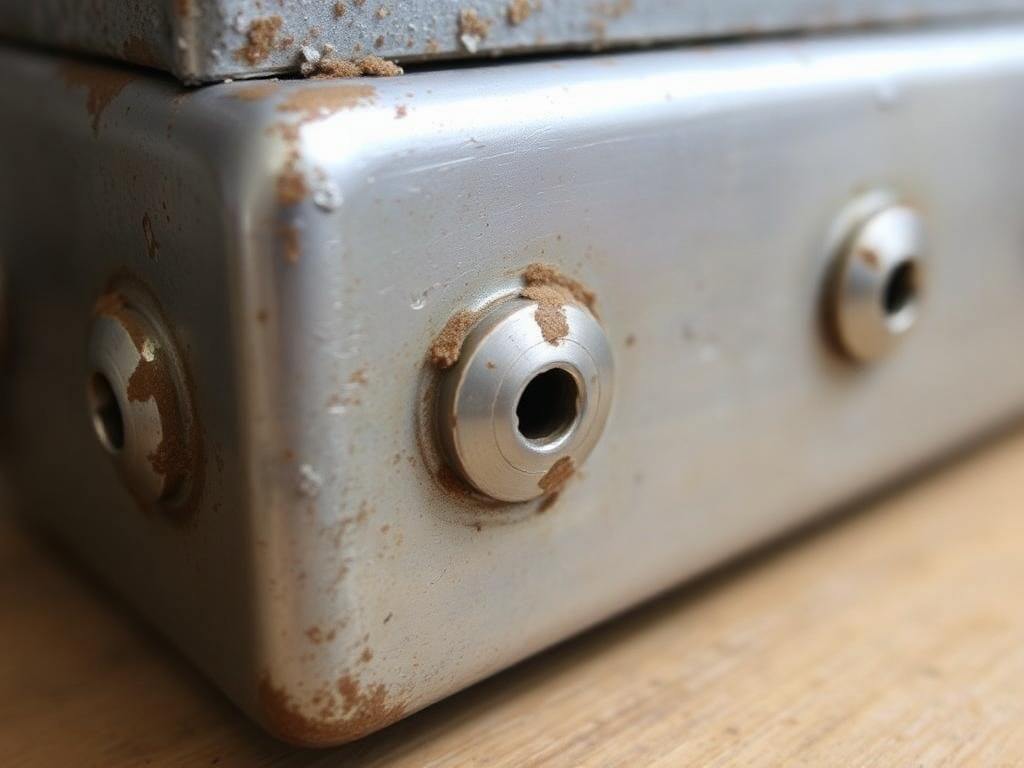Zinc alloys are commonly used materials characterized by their durability and versatility. Comprising primarily zinc and including small percentages of other metals such as aluminum, copper, and magnesium, these alloys find applications in a range of industries, from automotive components to electronic devices and even jewelry. However, despite their robust nature, zinc alloys can be susceptible to zinc alloy tarnish, which not only affects their aesthetic appeal but may also compromise their functionality.
Addressing the issue of tarnish is crucial for anyone working with or investing in zinc alloy products. The presence of tarnish can signify a deterioration of surface finish, leading to negative impacts on performance and appearance. Understanding the factors contributing to tarnish, as well as the solutions available for prevention and remediation, is essential for maintaining the value and functionality of zinc alloy items.
What is Tarnish?
Definition and Characteristics
Tarnish is a general term that describes a variety of discolorations that occur on metal surfaces due to chemical reactions, particularly oxidation. In the case of zinc alloys, tarnish usually manifests as a dulling of the surface and discoloration that can range from white or gray to dark brown or black. These visual changes often suggest underlying chemical transformations that might compromise the material’s properties over time.
Causes of Tarnishing in Zinc Alloys
Understanding what causes zinc alloy tarnish is vital for effective prevention strategies. A number of environmental factors can trigger tarnishing in zinc alloys:
– **Chemical reactions with environmental factors**: Exposure to moisture is a significant contributor to the oxidation process, where zinc reacts with oxygen in the presence of moisture. This can lead to corrosion, characterized by the formation of zinc oxide that further enhances tarnishing. Meanwhile, elements such as salts and acids, often found in coastal areas or industrial environments, can accelerate the tarnishing process.
– **Impact of pollutants and other substances**: Industrial emissions, which often contain sulfur oxides, can react with moisture in the atmosphere, leading to the formation of acidic conditions that exacerbate tarnishing. Additionally, common household products, such as cleaners and detergents, may contain chemicals that contribute to tarnish formation when they come into contact with zinc alloys.
Identifying Zinc Alloy Tarnish
Visual Indicators
Identifying tarnish on zinc alloys is crucial for timely intervention. Common signs include noticeable color changes, surface dullness, and a chalky residue that can accumulate over time. It is important to differentiate between tarnishing and other forms of corrosion, which may present more severe structural damage.
Testing for Tarnish
You can check for tarnish using simple methods that require minimal tools:
– **Visual Inspection**: Regularly examine your zinc alloy products for any signs of discoloration or dullness, which may indicate initial tarnishing.
– **Use of Cleaning Solutions**: Applying diluted cleaning solutions can help assess surface condition. If the tarnish lifts easily, this indicates an active tarnishing process.
Prevention of Zinc Alloy Tarnish
Protective Coatings
Investing in protective coatings can significantly reduce the risk of tarnishing:
– **Types of coatings**: Options include clear lacquers, electroplating, and powder coating. These barriers can limit exposure to moisture and environmental contaminants.
– **Benefits and limitations**: While protective coatings are effective, they are not invincible. Regular maintenance is still crucial to prolonging the life of the alloy.
Maintenance Practices
Establishing a consistent maintenance routine for your zinc alloy products can help stave off tarnish:
– **Regular Cleaning Routines**: Utilize soft cloths and non-abrasive cleaners to gently remove surface contaminants that contribute to tarnishing. Avoid harsh chemicals, which can exacerbate the problem.
– **Proper Storage Conditions**: Store zinc alloys in air-tight containers or add silica gel packets to absorb moisture, reducing the risk of tarnishing.
Environmental Management
To prevent tarnishing, it is essential to minimize exposure to harsh environments:
– **Reducing exposure to harsh conditions**: Limit contact with saltwater, industrial pollutants, and excessively humid environments.
– **Tips for avoiding moisture and corrosive environments**: Consider using protective wraps or enclosures when storing items or working with materials in vulnerable conditions.
Solutions for Existing Tarnish
Cleaning Methods
If tarnish has already developed on zinc alloys, prompt cleaning can restore their original appearance. Here are some effective cleaning solutions:
– **Home remedies**: Mixtures of vinegar, baking soda, and warm water can effectively lift tarnish when gently scrubbed with a soft cloth.
– **Commercial products**: There are many specialized tarnish removers available in the market that are specifically formulated for use with zinc alloys.
Restoration Techniques
For more severe tarnish situations, consider the following restoration techniques:
– **Mechanical polishing**: Using a soft buffing wheel can help restore the surface finish of heavily tarnished items.
– **Chemical methods**: Specialty chemical cleaners that target tarnish can provide a more aggressive approach if home remedies are insufficient.
Professional Assistance
Sometimes, tarnish might be beyond DIY solutions:
– **When to seek professional restoration services**: If the tarnish has compromised the structural integrity of the item or extensive tarnish has developed, professional help might be necessary.
– **Choosing a reputable service provider**: Look for service providers with experience in restoring metal alloys and positive reviews from previous clients.
Long-Term Care for Zinc Alloys
Periodic Inspections
Regular inspections of your zinc alloy products are essential for maintaining their condition:
– **Recommended timelines for checking alloy condition**: Inspections should be conducted every three to six months depending on environmental exposure and usage.
– **Signs that indicate maintenance is needed**: Look for indicators such as color changes, dullness, or irregularities in the surface texture.
Educating Users and Consumers
Awareness is key to effective care:
– **Importance of understanding properties of zinc alloys**: Understanding the characteristics and behaviors of zinc alloys will guide effective maintenance practices.
– **Resource suggestions for further learning**: Seek out guides, tutorials, and communities pertaining to metal care for continuous learning. Sites like the American Metalcraft Association (ametalcraft.com) offer valuable insights.
Conclusion
The significance of understanding and addressing zinc alloy tarnish cannot be overstated. By implementing good practices in terms of prevention, cleaning, and restoration, users can ensure the longevity and aesthetic quality of their zinc alloy products. For those seeking to maintain their value and appearance, satisfactory care leads not just to preservation, but to enhanced enjoyment and satisfaction in their use.
Additional Resources
We have compiled a list of recommended reading materials and resources for further information on zinc alloy care and tarnish prevention:
| Resource Type | Title/Link | Description |
|---|---|---|
| Book | Zinc Alloys: Engineering Properties and Applications | A detailed resource on the properties of zinc alloys. |
| Article | Corrosionpedia on Tarnish | A comprehensive look at what causes tarnish in metals. |
| Blog | Zinc Alloys Insights | Blog providing insights and trends in zinc alloy care. |
FAQ
- What causes zinc alloy tarnish? – Environmental factors such as moisture, salts, and pollution can trigger tarnishing.
- How can I remove tarnish from zinc alloys? – Home remedies like vinegar and baking soda are effective, as well as specialized commercial cleaners.
- What are effective preventive measures against tarnish? – Protective coatings and regular maintenance practices can help prevent tarnish.
- How often should I inspect zinc alloy items? – Periodic inspections every three to six months are recommended.
- Are professional restoration services necessary for tarnished zinc alloys? – It depends on the severity of the tarnish; significant damage may require professional help.
- What signs indicate that maintenance is needed? – Look for color changes, dullness, or surface irregularities.
- Can I store zinc alloys in humid environments? – It’s advisable to avoid humid conditions or to use silica gel packets for moisture control.
- Do all zinc alloys tarnish in the same way? – Different zinc alloys may tarnish differently depending on their composition and environmental factors.
- What types of protective coatings are available for zinc alloys? – Options include clear lacquers, electroplating, and powder coating.
- Where can I find more information about zinc alloys? – Consider checking metal specialty websites and publications dedicated to metallurgy.


